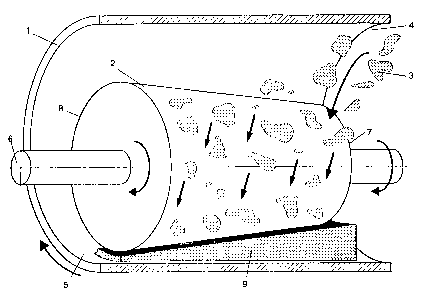Some of the information on this Web page has been provided by external sources. The Government of Canada is not responsible for the accuracy, reliability or currency of the information supplied by external sources. Users wishing to rely upon this information should consult directly with the source of the information. Content provided by external sources is not subject to official languages, privacy and accessibility requirements.
Any discrepancies in the text and image of the Claims and Abstract are due to differing posting times. Text of the Claims and Abstract are posted:
| (12) Patent: | (11) CA 2187595 |
|---|---|
| (54) English Title: | ROLL DESIGN |
| (54) French Title: | CONFIGURATION DE TAMBOUR |
| Status: | Expired and beyond the Period of Reversal |
| (51) International Patent Classification (IPC): |
|
|---|---|
| (72) Inventors : |
|
| (73) Owners : |
|
| (71) Applicants : |
|
| (74) Agent: | SMART & BIGGAR LP |
| (74) Associate agent: | |
| (45) Issued: | 2002-11-26 |
| (22) Filed Date: | 1996-10-10 |
| (41) Open to Public Inspection: | 1997-04-14 |
| Examination requested: | 1997-03-13 |
| Availability of licence: | N/A |
| Dedicated to the Public: | N/A |
| (25) Language of filing: | English |
| Patent Cooperation Treaty (PCT): | No |
|---|
| (30) Application Priority Data: | ||||||
|---|---|---|---|---|---|---|
|
The invention relates to a drum press, in which the gap between the drum (1) andthe roll (2) is greater at the input end than at the output end. The gap may decrease continuously or stepwise. Most preferably the drum is cylindrical in shape and the front end of the roll is thinner than the rear end. The chief advantage of the device is that feeding is easier to arrange with more space at the input end. The device is applicable for instance in the pressing of bark, sludge or chemical pulp.
L'invention concerne une presse à tambour, dans laquelle l'espace entre le tambour (1) et le rouleau (2) est plus grand à l'extrémité d'entrée qu'à l'extrémité de sortie. L'espace peut diminuer de manière continue ou par étapes. De manière préférée entre toutes, le tambour est de forme cylindrique et l'extrémité avant du rouleau est plus mince que l'extrémité arrière. L'avantage essentiel de ce dispositif consiste en ce que l'alimentation est plus facile à agencer avec plus d'espace au niveau de l'extrémité d'entrée. Le dispositif peut être appliqué, par exemple, au pressage de l'écorce, de boues ou de pâte chimique.
Note: Claims are shown in the official language in which they were submitted.
Note: Descriptions are shown in the official language in which they were submitted.

2024-08-01:As part of the Next Generation Patents (NGP) transition, the Canadian Patents Database (CPD) now contains a more detailed Event History, which replicates the Event Log of our new back-office solution.
Please note that "Inactive:" events refers to events no longer in use in our new back-office solution.
For a clearer understanding of the status of the application/patent presented on this page, the site Disclaimer , as well as the definitions for Patent , Event History , Maintenance Fee and Payment History should be consulted.
| Description | Date |
|---|---|
| Time Limit for Reversal Expired | 2016-10-11 |
| Letter Sent | 2015-10-13 |
| Inactive: Office letter | 2010-02-26 |
| Inactive: Office letter | 2010-02-24 |
| Inactive: Reversal of will be deemed expired status | 2009-12-04 |
| Inactive: Payment - Insufficient fee | 2009-12-04 |
| Letter Sent | 2009-10-13 |
| Inactive: IPC from MCD | 2006-03-12 |
| Grant by Issuance | 2002-11-26 |
| Inactive: Cover page published | 2002-11-25 |
| Inactive: Final fee received | 2002-08-28 |
| Pre-grant | 2002-08-28 |
| Notice of Allowance is Issued | 2002-03-12 |
| Notice of Allowance is Issued | 2002-03-12 |
| Letter Sent | 2002-03-12 |
| Inactive: Approved for allowance (AFA) | 2002-03-01 |
| Amendment Received - Voluntary Amendment | 2001-08-30 |
| Inactive: S.30(2) Rules - Examiner requisition | 2001-06-27 |
| Amendment Received - Voluntary Amendment | 2000-09-08 |
| Inactive: S.30(2) Rules - Examiner requisition | 2000-03-14 |
| Amendment Received - Voluntary Amendment | 1999-11-15 |
| Inactive: S.30(2) Rules - Examiner requisition | 1999-05-14 |
| Inactive: Application prosecuted on TS as of Log entry date | 1997-07-31 |
| Inactive: Status info is complete as of Log entry date | 1997-07-31 |
| Application Published (Open to Public Inspection) | 1997-04-14 |
| Request for Examination Requirements Determined Compliant | 1997-03-13 |
| All Requirements for Examination Determined Compliant | 1997-03-13 |
There is no abandonment history.
The last payment was received on 2002-09-17
Note : If the full payment has not been received on or before the date indicated, a further fee may be required which may be one of the following
Patent fees are adjusted on the 1st of January every year. The amounts above are the current amounts if received by December 31 of the current year.
Please refer to the CIPO
Patent Fees
web page to see all current fee amounts.
Note: Records showing the ownership history in alphabetical order.
| Current Owners on Record |
|---|
| FINBARK OY |
| Past Owners on Record |
|---|
| TIMO TAPIO SAALASTI |